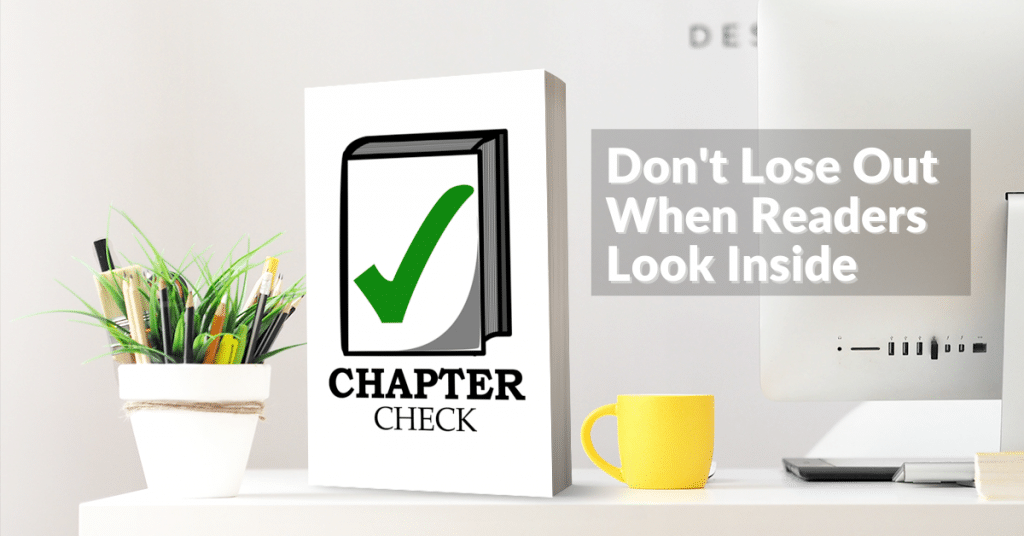
You secretly type, “how to write a first chapter” into Google, thinking that you should already know how. But you don’t.
You’re a writer. It’s embarrassing.
You’ve asked your friend who sells about a gazillion books a month, but she wasn’t much help. She “just writes it,” which is as helpful as saying to skydive you “just” jump out of a plane.
There’s the library. When the librarian walks you to the writing help section, you stand in silence, overwhelmed by shelf after shelf of craft books. If you had a spare three years, you could simply read them all.
That Google search? It returned almost 1 billion results. No joke. Try it out now. I’ll wait…
As you start to scan them, you realize that either novelists didn’t write the articles or that one post contradicts the next. Who do you believe? Where do you even begin?
Start here. With millions of words published and after helping hundreds of clients through thousands of scenes, I know how to write a first chapter of a book.
It’s not as difficult as you think.
What Should Be Included in a First Chapter? Don’t Forget the Marketing

The single most important takeaway from this article is that you must shift your focus from craft to marketing. Once you’ve finished your manuscript and have had it professionally edited, the first chapter becomes a marketing tool, just like your cover, title, and product description. The free sample or “look inside” of your book in the marketplace is designed to do one thing—make the sale.
While you shouldn’t compromise your story or integrity in the process, looking at your first chapter through a marketing lens can make the difference between captivating a reader and losing them.
Resistance Doesn’t Know How to Write an Engaging First Chapter
Even before you start work on the first chapter, it’s critical to get into the proper mindset. If you don’t have a frame of reference for not only your story but why you’re telling it, it’ll feel unfocused to the reader.
The first thing to do is to get past what Steven Pressfield calls Resistance, with a capital R. Resistance is the force that is trying to keep you from doing your most important work. It can take the form of sleeping in or a Netflix binge. Resistance tries to get you to procrastinate or convince you that the work you’re doing isn’t important.
Although you should be long past Resistance by the time you begin revising your first chapter, make sure you’ve removed any of that negative energy left behind. Whether they’re agents or readers, everyone wants to be grabbed from the opening sentence. If your first line, paragraph, or chapter is weak, it doesn’t bode well for the rest of your story. Once you’ve won the war against Resistance, make sure you go back and clear the battlefield.

Your first chapter can’t be bland, ordinary, or uninspiring. But what exactly does that mean?
You must be bold. The first chapter of your book should be the absolute best chapter in the entire book. Not the most important, but the “best” from a marketing perspective. Flawless prose, punctuation, grammar, and formatting is a given. Being bold means you’re not holding back in the first chapter. This is not the time to be cute, evasive, coy, or mysterious. Get the reader into the story right away using bold action or dialogue. Set the tone, according to the genre, and deliver on those expectations. If you’re writing a murder mystery, readers expect the “dead body scene” in chapter 1, so deliver it to them in a way that’s going to make it impossible not to turn the page. Be bold. Be unforgettable.
Why do you need to tell this story? What’s it really about? Although this is an aspect of your global story that you’ll have addressed by now, commonly called theme, give the reader a taste of it in the first chapter. Like the vibe or tone of the story, show us why this story matters. A strong theme is polarizing, forcing people to choose sides. For example, “love” is a topic and not a theme. But “If you love someone, set them free” is a theme. Why? Because some can argue that’s not a good approach for a long-term relationship. Whatever the reason, give us a first-chapter glimpse as to why you need to tell this story.
How to Write a Book and Make Those First Chapters Stunning
Don’t underestimate the power of verb tense and point-of-view. Again, you will have already made these decisions if you have a finished manuscript, but they need to be made at the beginning of every project and revisited in revisions.
Verb Tenses

Genre fiction typically falls into two verb tenses, past and present. While self-explanatory, it’s essential to consider any genre expectations when it comes to tense.
More importantly, POV is even more genre-dependent.
First-person narrative puts the reader inside the head of the protagonist and therefore, it feels more personal. However, committing to first person means you must commit to a single POV for your entire story as a multiple first-person POV is generally frowned upon.
Second-person narrative feels less natural for many fiction writers as you’re talking to the reader in much the same way I’m doing right now.
The two general varieties of third-person POV are limited and omniscient. Limited keeps you inside the head of only that POV character, while omniscient is often called “godlike” because the reader is invited into the heads of all the characters.
There isn’t a right or wrong tense or POV, only the one that best fits the genre.
As you revise your first chapter for publication, it’s important to make sure your main character has a strong voice. This is not the time to hold back or hide the protagonist’s voice from the reader—don’t “ease” them into the story. Go as deep and as detailed as you can with the protagonist so the reader can bond with the character.
Setting

Conversely, keep your scene-setting to a minimum. This feels counterintuitive because aspiring novelists feel the need to tell the reader everything they think they need to know before beginning the story. However, this is often called an “infodump” and violates the classic “show, don’t tell” rule of writing.
But it’s critical to anchor the setting for the reader, which you can do with a single specific detail through the eyes of the main character. Have your protagonist comment or have a thought about the sight, smell, or sound of the setting. The more senses, the better. For example, if my main character makes a right at 42nd Street and Broadway beneath the neon signs, the reader knows the setting is Manhattan without me telling them it’s New York City.
Another way to set the scene without infodumping is by showing us the main character’s routines, habits, relationships, etc. Does your protagonist eat at the same café every morning? Does she ride the bus with the same friend? Where does your main character go? With whom? When?
Mini-Plot

Even though it’s only a single chapter, give it a mini-plot. Make the first chapter (and every chapter in your book, if possible) a complete story.
In Three Story Method, I advise a minimum of Conflict, Choice, and Consequence. We’ll go into more details on those shortly, so for now, think about creating a complete story within your larger global story.
Using our murder mystery example, let’s assume that Officer Jackson is the protagonist. She gets a call on her radio that there’s a strange smell coming from apartment 2B in the Big City Apartment Complex (Conflict). When she arrives, she hears someone inside, but nobody answers the door, so she must decide whether to break the door down or call for backup (Choice). Jackson kicks in the door and finds a dead body on the floor—but also an open window and the sound of someone running down the fire escape (Consequence).
Even though that could be chapter 1, it’s a complete story because you’ve opened a loop for the reader (Why would someone be in an apartment with a dead body and then flee when the police arrive?) while still providing closure based on the Choice that Jackson had to make. And the reader will know that the dead body is only the beginning of the story, and they will want to keep reading.
Characterization Mistakes I’ve Made When Trying to Figure Out How to Write a Chapter
Character is king (or queen), especially in the first chapter. This is not a movie, so the first thing you need to do is introduce the protagonist to the reader. What does she look like? How old? Unique mannerisms or character quirks? We need to visualize this character in our head, and so you must sketch her for us.
But it’s not enough to focus only on a character’s physical attributes. We need to be shown the main character’s goal—what they’ll be chasing the entire novel. It’s helpful to think about this as wants (external pursuits) and needs (internal desires). And, pro tip, these often contradict each other because your character doesn’t always know what they want—but the reader should. A cranky teenager might want to stay out all night, but what they really need is to have a parent demonstrate care by imposing a curfew.

K.M. Weiland suggests creating a lie that the protagonist believes, “a specific belief, which you should be able to state in one short sentence.” This then makes “The Thing Your Character Needs” nothing more than a realization. “In a word, the Thing Your Character Needs is the Truth. He needs the personalized antidote to his Lie.”
In The Negative Trait Thesaurus, Angela Ackerman and Becca Puglisi say, “Wounds are often kept secret from others because embedded within them is the lie—an untruth that the character believes about himself… For example, if a man believes he is unworthy of love (the lie) because he was unable to stop his fiancée from being shot during a robbery (the wound), he may adopt attitudes, habits, and negative traits that make him undesirable to other women.”

The big goal for the protagonist doesn’t need to be clearly stated in the first chapter, but it should be planted as early as possible. The goal should be big and hairy enough to force them beyond the status quo, which is how the Conflict (also known as the Inciting Incident) is defined.
Make us care about that goal. Take us on the journey with the protagonist.
Blake Snyder popularized the “Save the Cat” moment, a technique used by screenwriters and novelists alike. Have the main character do something positive or altruistic (like “saving a cat” from a tree) so the reader will bond with him. You can do this with pure, heart-pounding action or through thoughtful and insightful dialogue—it all depends on the genre. Either way, create empathy for your protagonist by making him or her honorable and kind. It’s difficult for readers to bond with a character whose first impression is whiny or arrogant.
The Bad Guy(s)/Girl(s)

Don’t forget about the antagonist! Their relationship to the villain can define a great protagonist. The antagonist creates obstacles for our hero, and if these are not present in chapter 1, they should be foreshadowed in some way. Many of my clients struggle with the antagonist because they believe it’s always a character—it is not. A force of antagonism works the same way. For example, nature might be the force of antagonism in a survivalist story.
In almost every circumstance, the reader needs to know the goal of the protagonist and the obstacles she might face by the end of chapter 1.
Character Introductions
The first chapter is also a great place to introduce major characters. You don’t want a parade of introductions marching across the page, but naturally introducing the reader to the rest of the cast as soon as possible is a good idea. These other main characters (and minor ones) should never upstage the protagonist, but they need to make an appearance.
The Three Story Elements You Must Have in Every Scene
All stories, from knock-knock jokes to novels, follow a similar form, and even a kindergarten student can identify it: beginning, middle, end. In Three Story Method, I defined this using slightly different terms but with the same objective. Let’s dig a little deeper into Conflict, Choice, and Consequence.
Conflict

The thing that yanks your protagonist out of his ordinary life. Yes, it’s that simple. The term “Inciting Incident” is often used in screenwriting and movie production as well as novel writing, but we chose to call it “conflict” because it’s more specific. This single event does not necessarily need to be tense, dramatic, or a life-or-death situation—the nature of the inciting incident will depend on your genre. However, it does need to force the main character into changing, which then “incites” the story. Without change precipitated by conflict, there is no story.
Choice

In every unit of Story, your protagonist must face a choice. I need to repeat this: There must be a choice.In all of my client work over the years, this is the single most challenging concept for most authors to conceptualize.
The Choice is a difficult decision the protagonist must face, born from a challenging question with equally wonderful or horrific consequences. The best Choice in any story leaves the reader (1) arguing with himself over which option is best for the character and (2) unable to put the book down, insistent on finding out what the character decides.
Determining the intensity of the Choice is often a case of splitting hairs and not nearly as important as making sure the question facing the main character is a supremely difficult one. We are compelled to turn the page or keep watching when we empathize with the character, running the odds on the consequence of the decision as if it were our own. Make it difficult on the character and your reader will follow.
Consequence

On the nature of consequence, Aristotle says, “Actions capable of this effect must happen between persons who are either friends or enemies or indifferent to one another. If an enemy kills an enemy, there is nothing to excite pity either in the act or the intention—except so far as the suffering in itself is pitiful. So again with indifferent persons. But when the tragic incident occurs between those who are near or dear to one another—if, for example, a brother kills, or intends to kill, a brother, a son his father, a mother her son, a son his mother, or any other deed of the kind is done—these are the situations to be looked for by the poet.”
In other words, high-stakes consequences arise when the choice facing the character is incredibly difficult. The more difficult the choice, the more engaged the reader will be. Simply put, the Consequence is the answer to the Choice as well as the new circumstance resulting from it.
As mentioned earlier, you need to be able to identify the Conflict, Choice, and Consequence in your global story, but you also need to be able to do so in your first chapter. The stakes probably won’t be as high, but if you create a mini-plot and treat the chapter as a standalone story, you should be able to include these three critical elements.
Finally, when it comes to form, don’t underestimate the power of open loops. Present situations that have no clear explanation and take the reader along with the protagonist on a quest for the answers.
You’re probably familiar with an open loop that occurs at the end of a chapter, often called a “cliffhanger.” A cliffhanger will work as long as it’s not overused. In Three Story Method, pushing the Consequence into the next scene and having it do double-duty as that scene’s Conflict creates a cliffhanger. But even without a loop opened dramatically at the end of the first chapter, you can present subtle and interesting questions along the way that will compel the reader to turn the page to chapter 2.
The Ray Bradbury Style – First Chapter Example
While style can be subjective, best practices are essential when it comes to mainstream publishing. Let’s take a look at several.
Your first line and opening paragraph need to be absolutely gripping. How you do so will depend entirely on the genre, but it’s important to nail it. The best way to do this is to write the first line and opening paragraph a minimum of ten times. It will feel burdensome and redundant, but I promise you’ll find a hidden gem where you least expect it. Push beyond your first, second, and even fifth instinct because those ideas are most likely generated from story you’ve consumed, and therefore, they won’t grab the reader.
I don’t know if Ray Bradbury did this for Fahrenheit 451, but the opening line of that novel is one of the most memorable of all time.
“It was a pleasure to burn.”
What? What is burning? Who set it on fire? And why would the burning of something be pleasurable?

The second line: “It was a special pleasure to see things eaten, to see things blackened and changed.”
If you’ve ever watched a campfire, you know exactly how this feels.
This first line pulls you in and opens several loops immediately. Our protagonist, Montag, is a fireman. But instead of putting out fires, he starts them!
Once you discover that this is a dystopian society that burns books, it’s impossible to put down the book.
Keep your first paragraph relatively simple. Be clear and concise. This is not the time to impress the reader with your vocabulary or lyrical prose. Instead, pique interest by being efficient with your words while drawing them into the story.
If you’re thinking, “But my story doesn’t really rev up until chapter 3.” Then my question to you is, why not begin the book there? We often make the mistake in thinking that we must tell the reader everything they need to know about the world, or they won’t be interested in the story, and unfortunately, we have this backward. Slow-dripping details of the world is much more enticing than a history lesson or geography report.
Your first sentence, paragraph, and chapter all need to serve one function: make the reader turn the page to find out more. Each word and sentence functions as a stepping-stone to the next, taking the reader across the river and deeper into the wilds of your story.
Dialogue or Action

I can’t claim to be an expert on dialogue, but I recently worked with The Dialogue Doctor, Mr. Jeff Elkins, and I learned so much from his coaching.
Scan your first chapter and make sure your characters aren’t suffering from that dreaded disease, mono-mouth. If all of the characters sound the same, your dialogue is boring. You should be able to write swift dialogue without many tags or saidisms by creating a unique voice for each character. Although there’s much more to good dialogue than this, at the very least, use words or mannerisms unique to each character, so we know who’s speaking without visual aids.
Beginning a novel with action instead of dialogue immediately puts the reader in the scene and has historically been effective. The reader lives vicariously through the protagonist, seeing, touching, smelling, tasting, and hearing what the main character does.
Don’t underestimate the power of tone. Tone supports and validates genre for the reader. A thriller’s tone might be dark and foreboding. A horror novel, disorienting and frightening. A romantic comedy, humorous and joyful. How do you know what tone to use? Read the genre as much as possible, so you’ll know what readers expect when they begin reading your first chapter.
Storytelling = Marketing
It’s no surprise that good marketing results from good storytelling. If you write a first chapter and make turning the page irresistible, readers will buy the book. And keep buying books from you. However, if you don’t hook them right away, you’ve not only lost that sale but quite possibly all future sales from that customer. Readers won’t often give unknown authors a second chance.
Check Out This First Chapter Checklist
If you’re still not sure how to start the first chapter of a book or how to structure a chapter in a book, use this handy checklist:
- Is your first chapter bold?
- Do you know why you’re telling this story?
- Have you thought about your choice of verb tense?
- Do you know which POV best suites your genre?
- Have you given the reader one specific setting detail without “infodumping” them?
- Does your first chapter include a complete mini-plot?
- Is it consistent with the genre expectations?
- Have you identified your protagonist’s wants and needs?
- Have you identified an antagonist or force of antagonism?
- Did you create a “save the cat” moment for your main character?
- Have you introduced other main characters without upstaging your protagonist?
- Can you identify the Conflict, Choice, and Consequence in the chapter?
- Are your first line and paragraph simple, clear, and concise?
- Are you sure that your chapter 1 is really your first chapter?
- Have you cured mono-mouth?
A Free Resource from ChapterCheck.com

Now you’re saving time, not going to Google for a billion results, or consulting conflicting posts online.
You’ve learned how to get in the right mindset, how to think like a marketer for your first chapter. You now pay attention to logistics, characterization, form, and style.
The next time your critique group asks you how to write a first chapter of a book, you’ll have all the answers.
Your books will be more attractive to the right readers, and that’s going to lead to more sales.
And if you’re still not sure about some aspects of writing that first chapter, I’m here to help.
Go to ChapterCheck.com right now where you can get instant, 100% FREE access to my “How to Write a Scene Course” without creating an account, entering payment information, or submitting your email address. Happy writing!
Posted in Productivity, Publishing, Recent, Story

